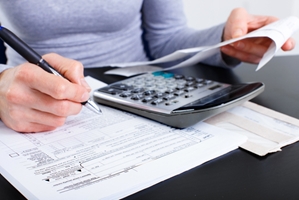
Crunching the numbers and planning your next tax return is rarely the most thrilling part of owning a small business, but you can maximise your bottom line if you manage your tax liabilities effectively.
So, how can you optimise your approach to small business taxes? Whether you're a sole proprietorship, a company or a partnership, these tips should help you get started.
81 per cent of businesses in Australia feel accounting software is critical to their operation.
1. Invest in accounting software (if you haven't already)
Some 51 per cent of Australian small businesses still use disorganised paper-based systems to keep track of their income, receipts or invoices, according to Xero research. Over one-third (38.8 per cent) of organisations spend several hours every week processing this administrative burden.
This time could be better spent growing your business, which is why many SME owners turn to cloud accounting software and other platforms to automate the more laborious elements of their tax returns.
Canstar Blue revealed that 81 per cent of businesses in Australia feel accounting software is critical to their operation – don't get left behind.
2. Become a deductions dynamo
You may be surprised at the amount of deductions you can make for business expenses. This is by no means an exhaustive list, but you can typically make deductions for:
- Business travel;
- Motor vehicles;
- Various repairs, maintenance and replacements;
- Salary, wages and super;
- Stationery and office equipment; and
- Capital investments (such as machinery).
Sole traders might be able to keep track of their deductions on their own, but partnerships and companies with more complex tax requirements will need a qualified accountant. After all, any cost you fail (or forget) to deduct is simply throwing money away, as it could be used to offset your income.
#Smallbiz: Get your business records ready now for a smoother #TaxTime! Tips @ https://t.co/ilpwYhuWND
Sales
Wages
Business travel
Operating expenses pic.twitter.com/8IknERppJg— ato.gov.au (@ato_gov_au) May 16, 2018
3. Plan a comprehensive tax return calendar
The new financial year starts on 1 July and ends 12 months later on 30 June, but there are many deadlines between these two dates that you'll need to remember.
Due to weekends falling on different days each year, the specific dates often change, so check the Australian government website to make sure you don't miss anything.
Business Activity Statements are designed to incorporate the majority of the taxes you pay, including GST and pay as you go (PAYG) instalments, but you'll need to find out how often to lodge your returns. A company with a GST turnover of more than $20 million a year must report monthly, while businesses with lower revenues are only required to do so quarterly.
4. Don't miss out on concessions
Small businesses can benefit from a range of tax concessions in Australia, so do your research and ensure you make the most of them – some are only available temporarily.
A full list can be found at the Australian Taxation Office's website, but you could receive concessions for:
- Deductions;
- Income tax;
- GST and CGT;
- Fringe benefits tax; and
- Superannuation.
The concessions you can access usually depend on your turnover, with the most generous benefits offered to businesses earning less than $2 million a year. Nevertheless, there are still options available for companies earning up to $10 million annually.

Do you need support with your small business taxes?
Enlisting the services of an experienced accountant means that you can concentrate on running your business, while leaving the complexities of tax planning to the real experts.
With WMC Accounting, you can rest assured that you'll receive sophisticated tax and accounting services, as well as any additional business advisory offerings that you need to support your organisation's growth. Please request an appointment with a member of our team today to see how we can help you achieve your goals.



